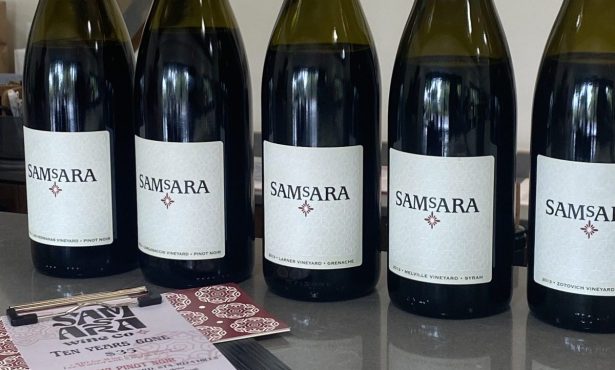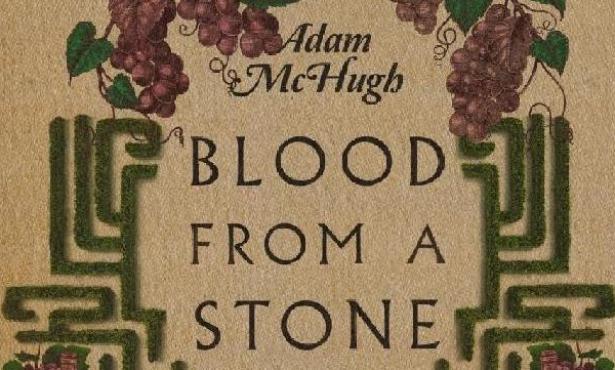Japan’s Gift to Wine Lovers
The Koshu Grape

When I think of Japan, I think of all the things I love about it-the measured and graceful restraint of Japanese cuisine; Japanese Zen Buddhism, which resonates with my spiritual inclinations; Japanese anime, an art form that’s fascinating for marrying innocence and darkness; and so much else. But, let’s just say that, until very recently, I never really thought about wine when I thought about Japan.
Alas, that has all changed. Recently, Greg Brewer-of diatom, Brewer-Clifton, and Melville-shared a few koshu wines with a group of colleagues that meet monthly to discuss and taste wines in the spirit of discovery and education.
Brewer, who had recently returned from a trip to Japan, shared with our group eight wines, all different variations on the same grape: koshu, the principal varietal of the Katsunuma Valley, a region dedicated to growing wines of merit and credibility. Although the first commercial wine grapes were planted in Japan nearly 120 years ago, the island country’s wine industry has only been producing commercial wines in earnest, and for an international audience, for 18 or so years.
Koshu’s long and colorful history begins nearly 1,300 years ago, when Zen monks cultivated the grape after acquiring it on the Silk Road coming home from China. It became an integral part of their agricultural history, so much so that it’s now considered Japan’s native grape. These days, the most exceptional wines come out of the Yamanashi region of the Katsunuma Valley.
So what does koshu taste like? It’s always tricky to describe a varietal’s typical taste, and if you ask a roomful of winemakers, both Japanese and American, to list its attributes, you’ll get numerous and diverse answers. Still, there are characteristics that come to define a certain grape, and koshu is no different. Of the eight wines we tasted, they all possessed a lovely minerality and brine-like appeal, smelling of bracing ocean breezes and sea salt, and possessing great acidity and vibrancy. Most of the wines also had an underlying almond-like characteristic, and also gave forth lovely floral components, leaning more toward whitestar jasmine.
For all of the talk about trendy wines like Gr¼ner Veltliner, koshu is really where it’s at. It pairs seamlessly with a wide array of foods. Its bright, pleasant acidity enlivens the palate and excites the senses. It has an absolutely captivating and lovely nose. I try white wines all the time, day in and day out, and I found some koshu to be nearly transcendent. It’s been a while since anything in the wine world has left me feeling this encouraged and interested.
Koshu wines are uniformly low in alcohol. They are dry and generally light in body. They do, however, possess a great depth of flavor, but some of them have never seen an oak barrel at all, so they can’t really be compared to chardonnay. What would I compare it to? That’s just it-koshu is so different that I can’t really think of a tangible enological reference. If it’s possible, there is something refreshingly “new” about koshu. And, for an average of $25 per bottle, wine lovers will get more than their money’s worth.
Here are my notes on some of the wines we tasted.
2006 Grace, Cuvee Toriibira Vineyard
This was one of my favorite koshus. The nose offers up very delicate notes of marzipan, honey, and guava. There is also a distinct seaweed and brine quality on the nose, perfect with sashimi. This was perhaps the most round and fleshy wine, and might be a good introduction to the koshu grape for white wine lovers.
2006 Aruga Branca, Isse Hara
This lovely wine is cerebral and somewhat haunting. You know a wine has captured your imagination when you can’t name what it smells like. I ran its aromatics through the memory banks of my mind, and came up empty-handed, but not unhappy. This bottling defies categorization, and is arresting in its uniqueness and delicacy.
2006 Ch•teau Mercian, Koshu Kiiroka
Again, there are distinctive notes of toasted almonds and marzipan on the nose of this wine, as well as a minerality that leaves the palate feeling cleansed and ready for another bite of food. As is the case with all the koshu wines we drank, the Ch•teau Mercian seems to have been made to go with food. It won’t fatigue the palate or other senses. It’s truly a complement to the table.
4•1•1 See liquorama.net to place an order.



